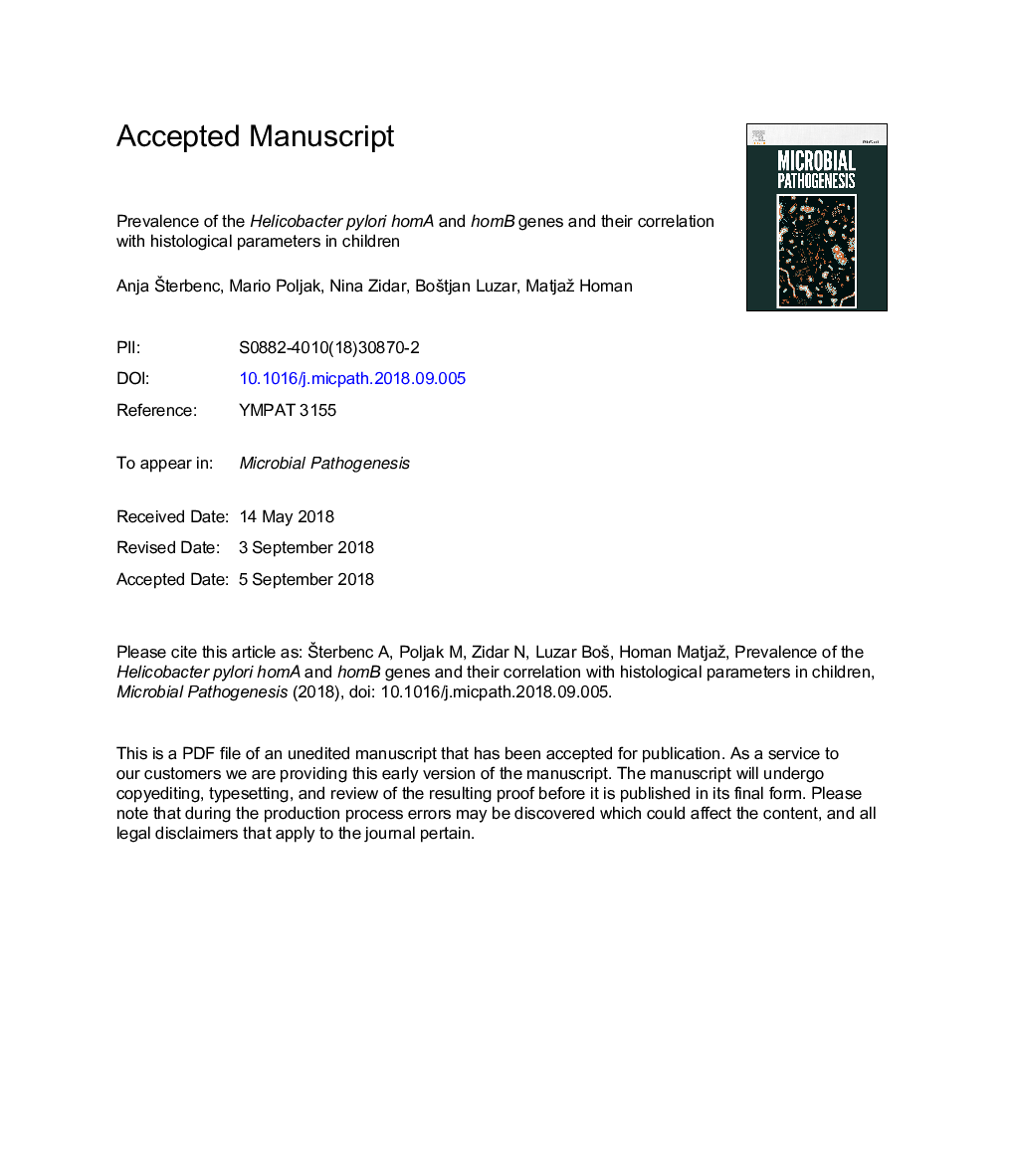| Article ID | Journal | Published Year | Pages | File Type |
|---|---|---|---|---|
| 10148691 | Microbial Pathogenesis | 2018 | 37 Pages |
Abstract
The significance of Helicobacter pylori (H. pylori) virulence genes such as cagA and vacA has been extensively studied in children; however, data regarding the significance of homA and homB genes are scarce. The aim of our study was to evaluate the prevalence and clinical relevance of these genes in Slovenian children. All children diagnosed with H. pylori infection between 1993 and 2013 were included in the study (nâ¯=â¯343). DNA was extracted from biopsy specimens previously used for the rapid urease test. Five histological parameters were evaluated and the presence of the vacA, cagA, iceA, babA2, and homA and homB genes was determined by PCR amplification. The homA and homB genes were detected in 174/285 (61.1%) and 116/285 (40.7%) strains, respectively. The presence of the homA gene was significantly associated with the absence of the homB gene (Pâ¯<â¯0.001); however, no associations were found between the presence of either the homA or homB genes and any of the other investigated virulence genes. Similarly, there were no correlations between the presence of the homA and homB genes and any of the histological parameters. In contrast, genotype profiles vacA s1m1/cagA+/babA2+/homB+, vacA s1m2/cagA+/babA2+/homA+, vacA s1m1/cagA+/babA2+/homA+, vacA s1m1/cagA+/babA2â/homA+, vacA s1m2/cagAâ/babA2â/homA+, and vacA s2m2/cagAâ/babA2â/homB+ were associated with a higher degree of gastric mucosal damage. Thus, although the homA and homB genes did not represent important individual virulence markers in this population, they may act synergistically with other H. pylori virulence genes, causing severe gastritis in children.
Keywords
Related Topics
Life Sciences
Immunology and Microbiology
Microbiology
Authors
Anja Šterbenc, Mario Poljak, Nina Zidar, Boštjan Luzar, Matjaž Homan,
